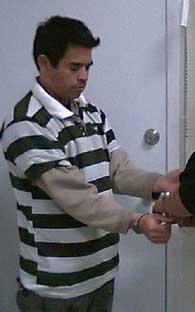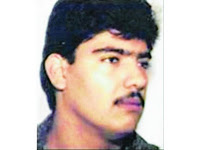
Julian Zapata Espinoza accused in Jaime Zapata Murder
Julian Zapata Espinoza, aka “The Tweety” linked to “Los Zetas“, was extradited, and facing trial in federal court in Washington, DC
Julian Zapata Espinoza, alias “El Piolín“, alleged murderer of the agent of the Bureau of Immigration and Customs Enforcement (ICE) Jaime Zapata last February in Mexico, pleaded not guilty today in federal court Washington.
ICE director John Morton, said Zapata Espinoza was extradited from Mexico to face four charges, including three of murder and carrying a set in the commission of a violent crime.
“Extradition and accusations against Zapata Espinosa is an important step in bringing to justice the attackers of Jaime Zapata and Victor Avila“, another ICE agent who was injured, said Morton.
A grand jury in the District of Columbia issued on 19 April an indictment against Zapata Espinoza for the attempted murder of an officer and two of attempted murder in the case of Avila, but the document had been sealed.
Zapata Espinoza, an alleged member of Los Zetas drug cartel, was captured in Mexico in February along with five of his accomplices. His extradition was requested by the United States last May.
During his detention, the Mexican army said Zapata Espinoza admitted the commission of murder and attributed to confusion about the identity of the agents, who mistook them for members of another organization.
The Assistant Attorney General Lanny Breuer said the extradition and criminal prosecution against Zapata Espinoza show the determination of the administration of President Barack Obama to prosecute attackers Zapata.
“We will continue working with our partners in Mexico to police these violent criminals accountable,” said Breuer.
The deputy director of the Federal Bureau of Investigation (FBI), Kevin Perkins, said the case against Zapata Espinoza is a “significant breakthrough” in the investigation into the death of Zapata agent.
During the hearing of a charge, a judge decided to keep him in jail without bail. His next hearing’s scheduled for Jan. 25 in Washington
Related articles
- Drug cartel member extradited to D.C. to face murder charge of ICE special agent Jaime Zapata (mysanantonio.com)
- Suspect in immigration agent killing held in US (sfgate.com)







You must be logged in to post a comment.